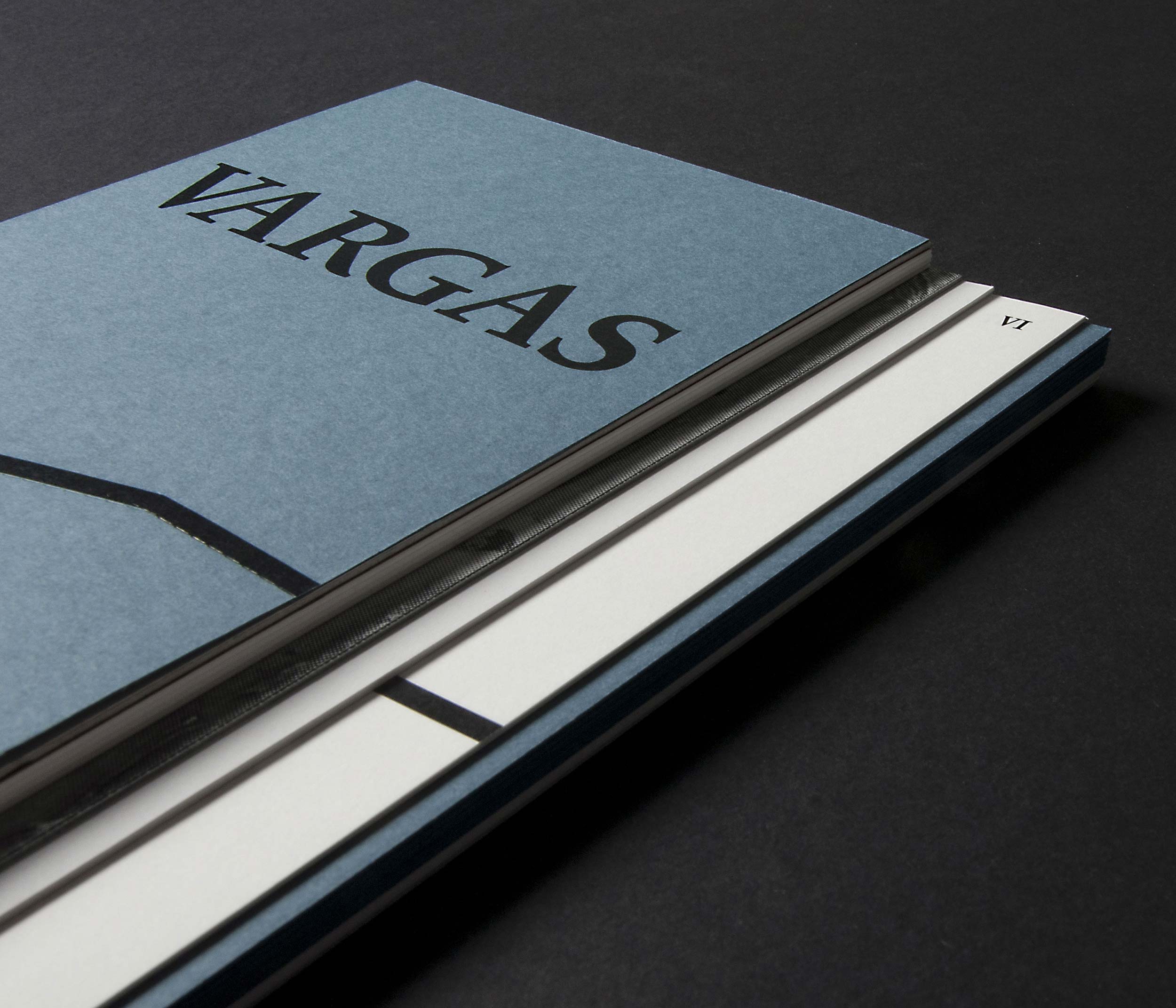
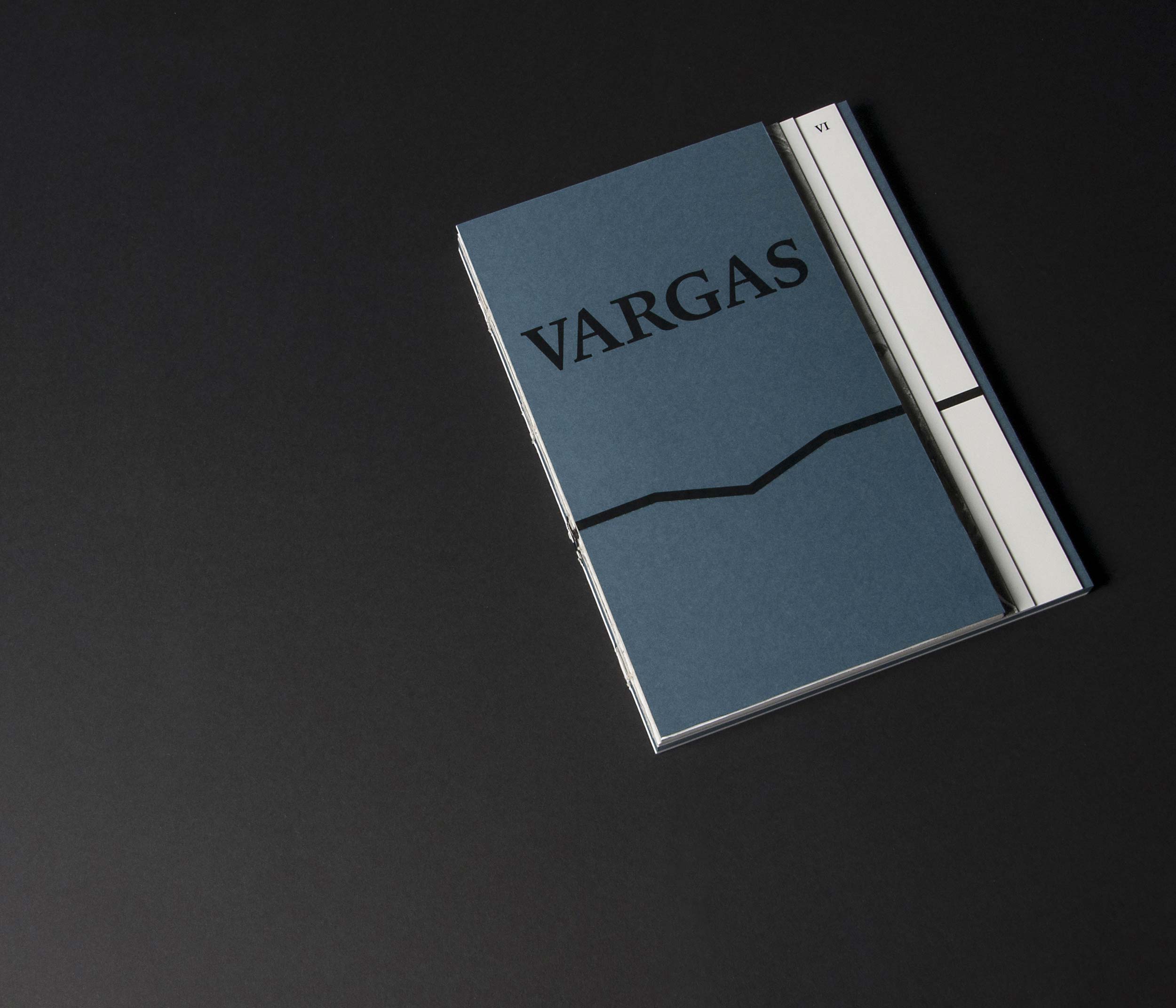

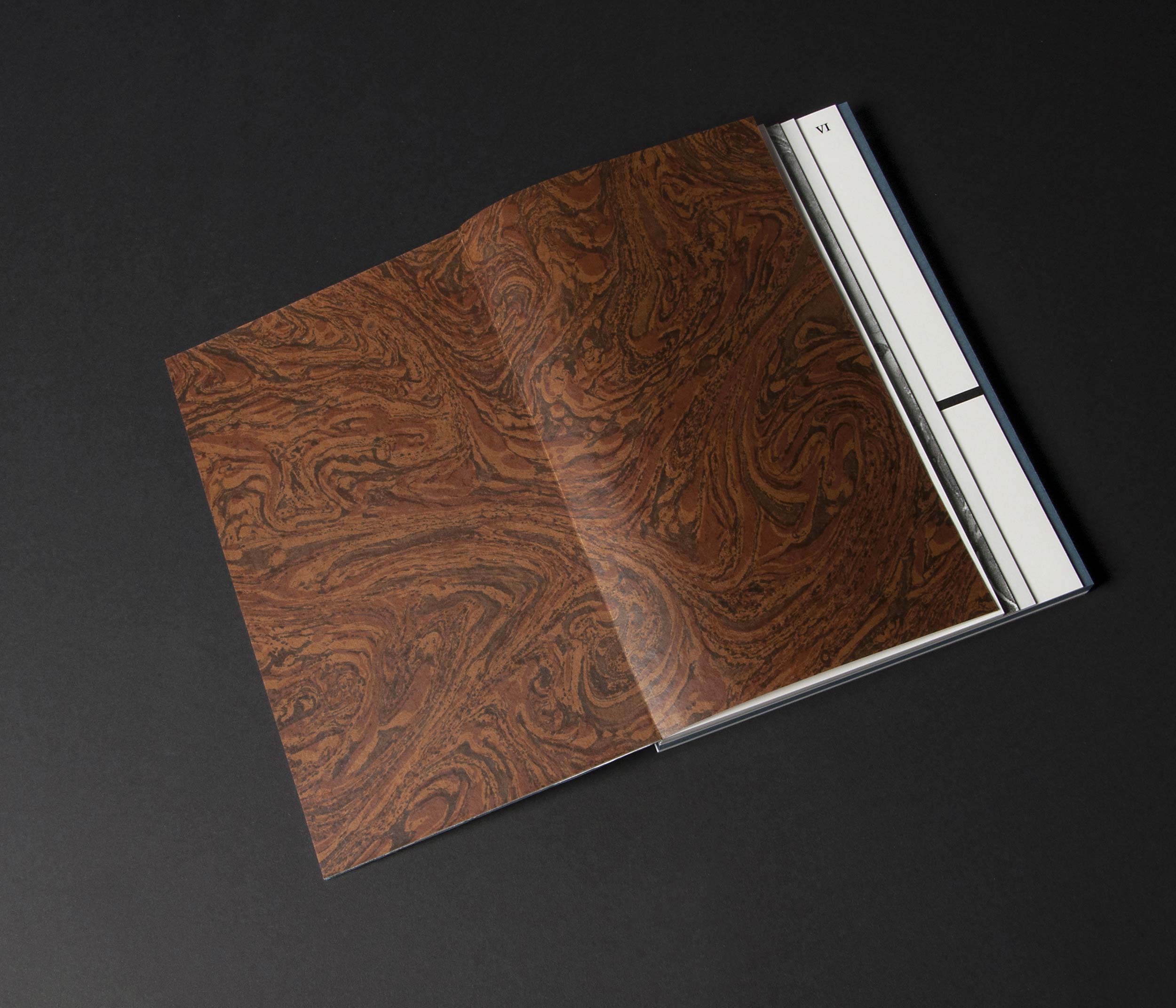

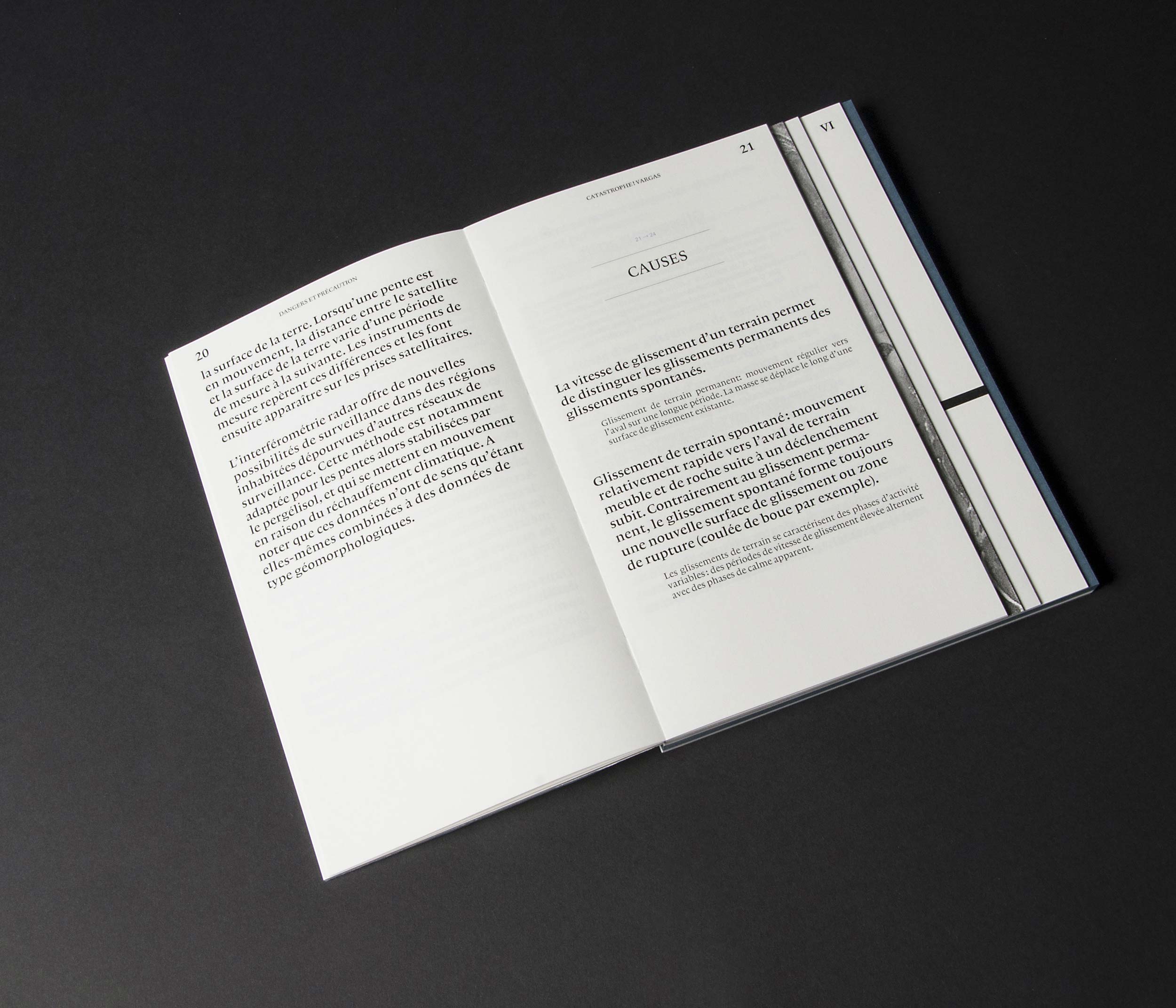
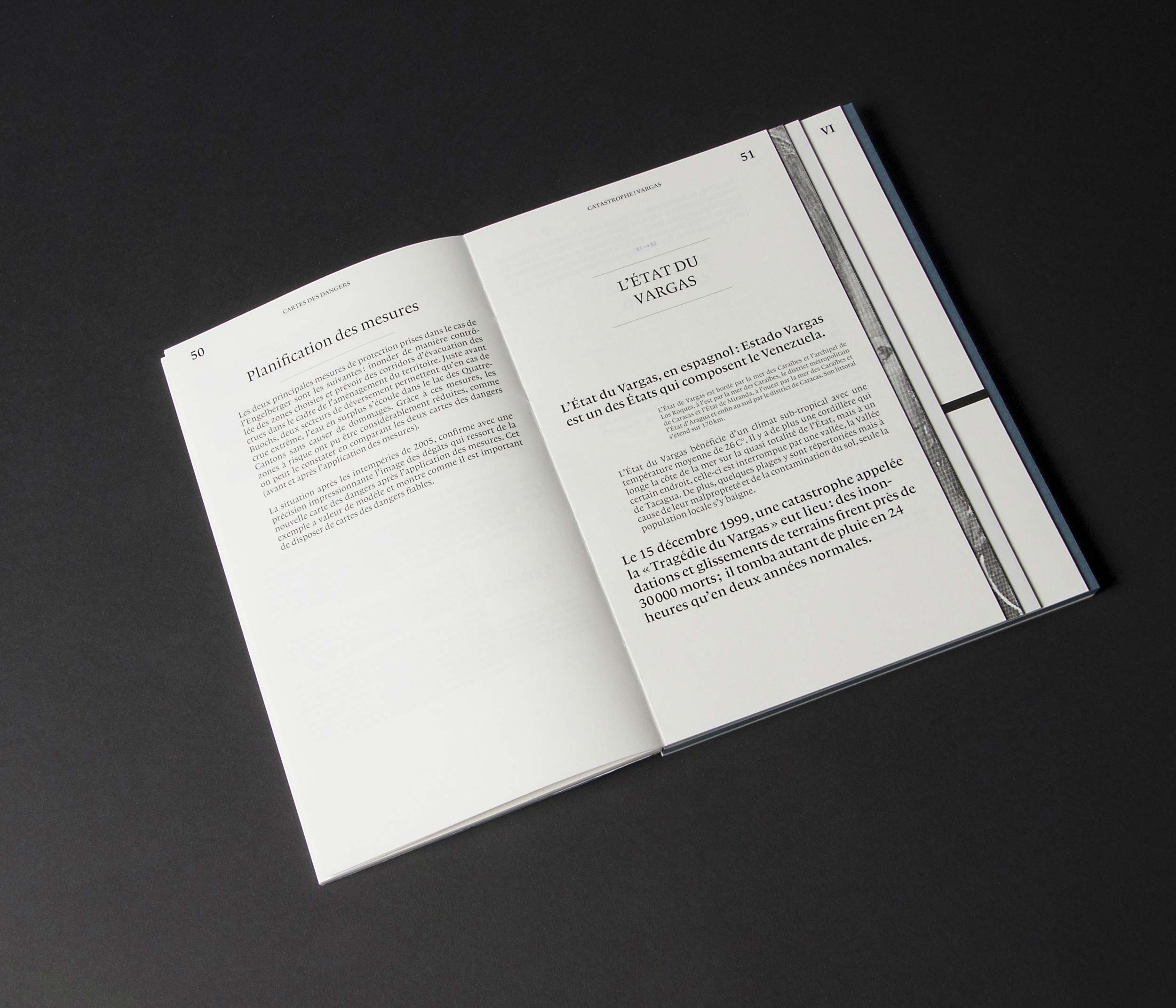
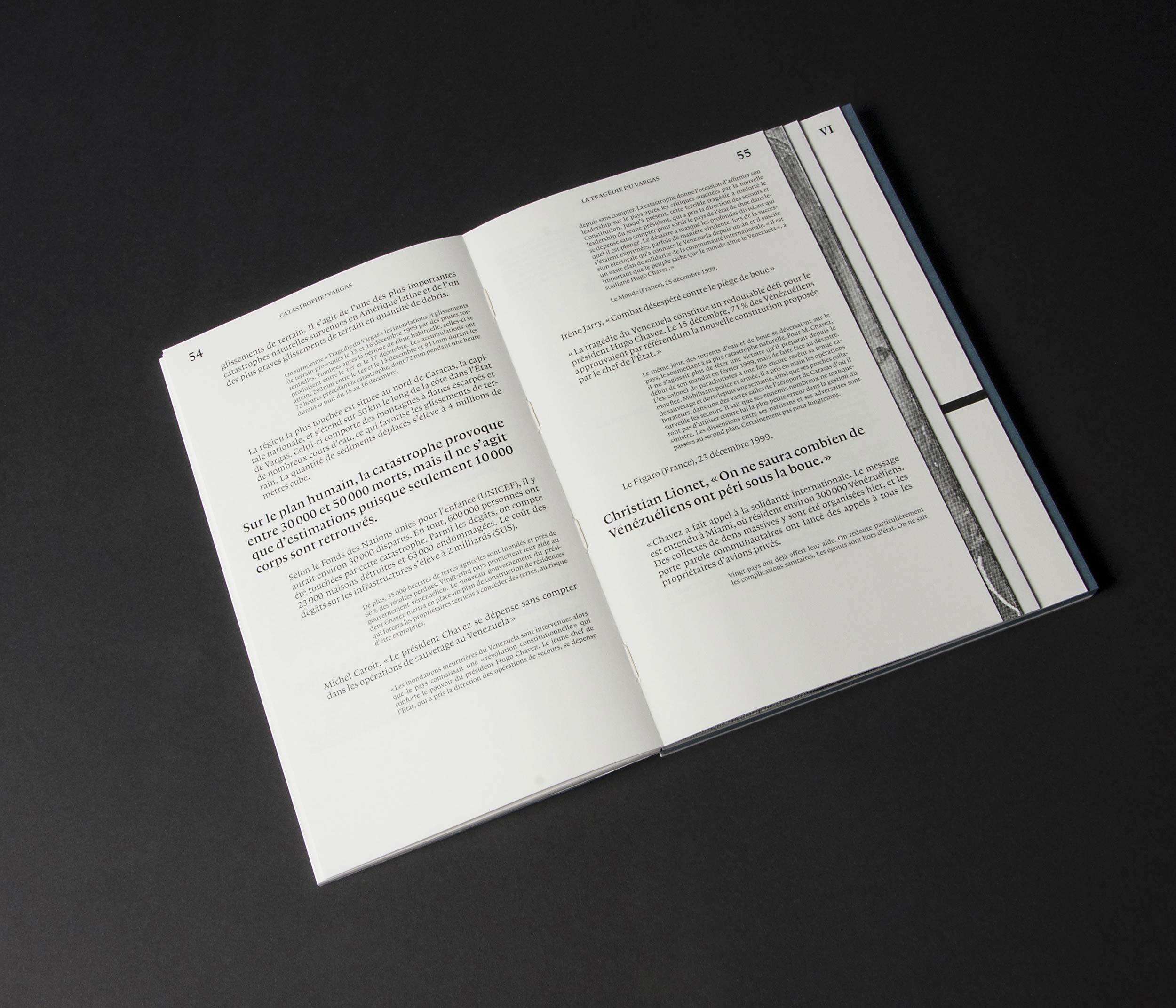


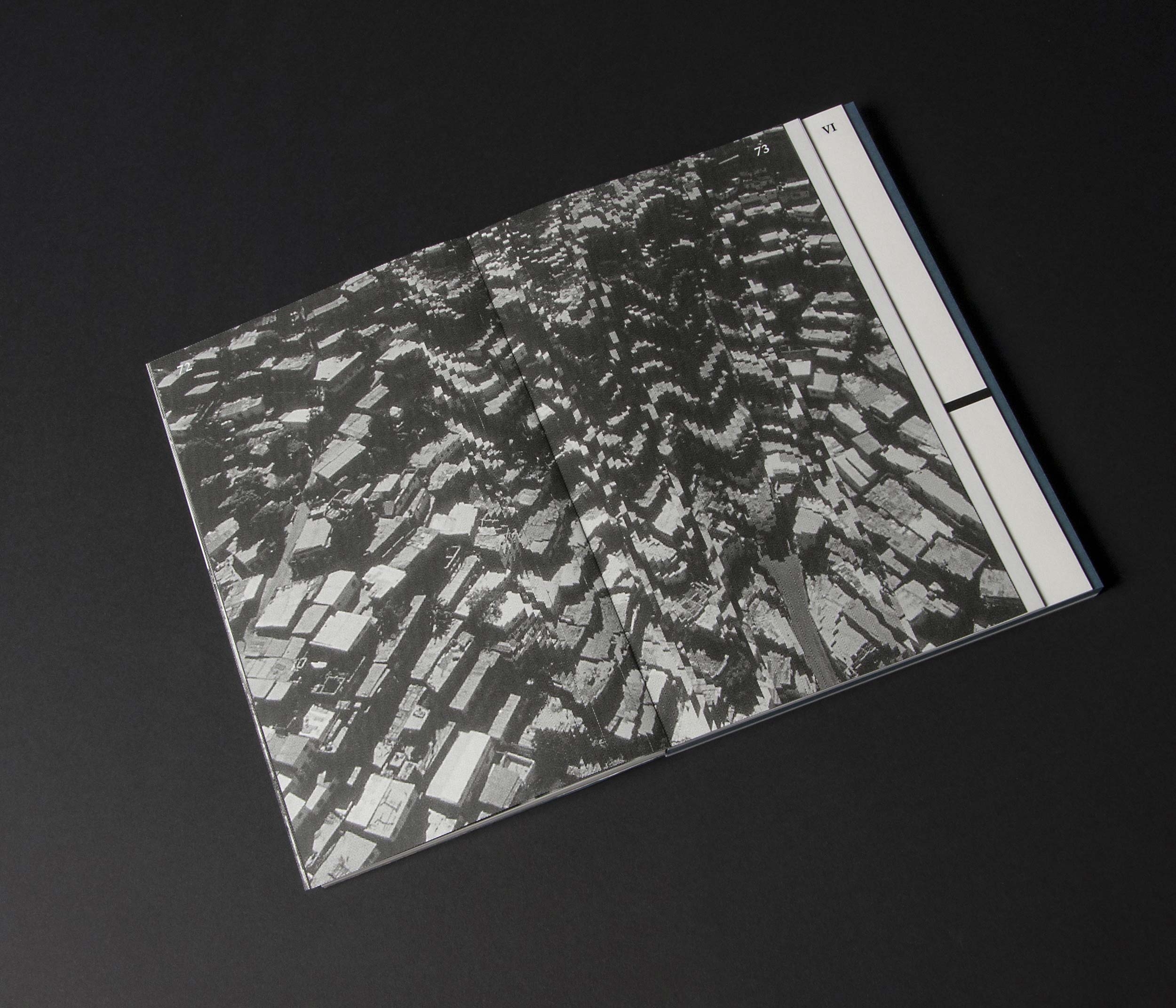



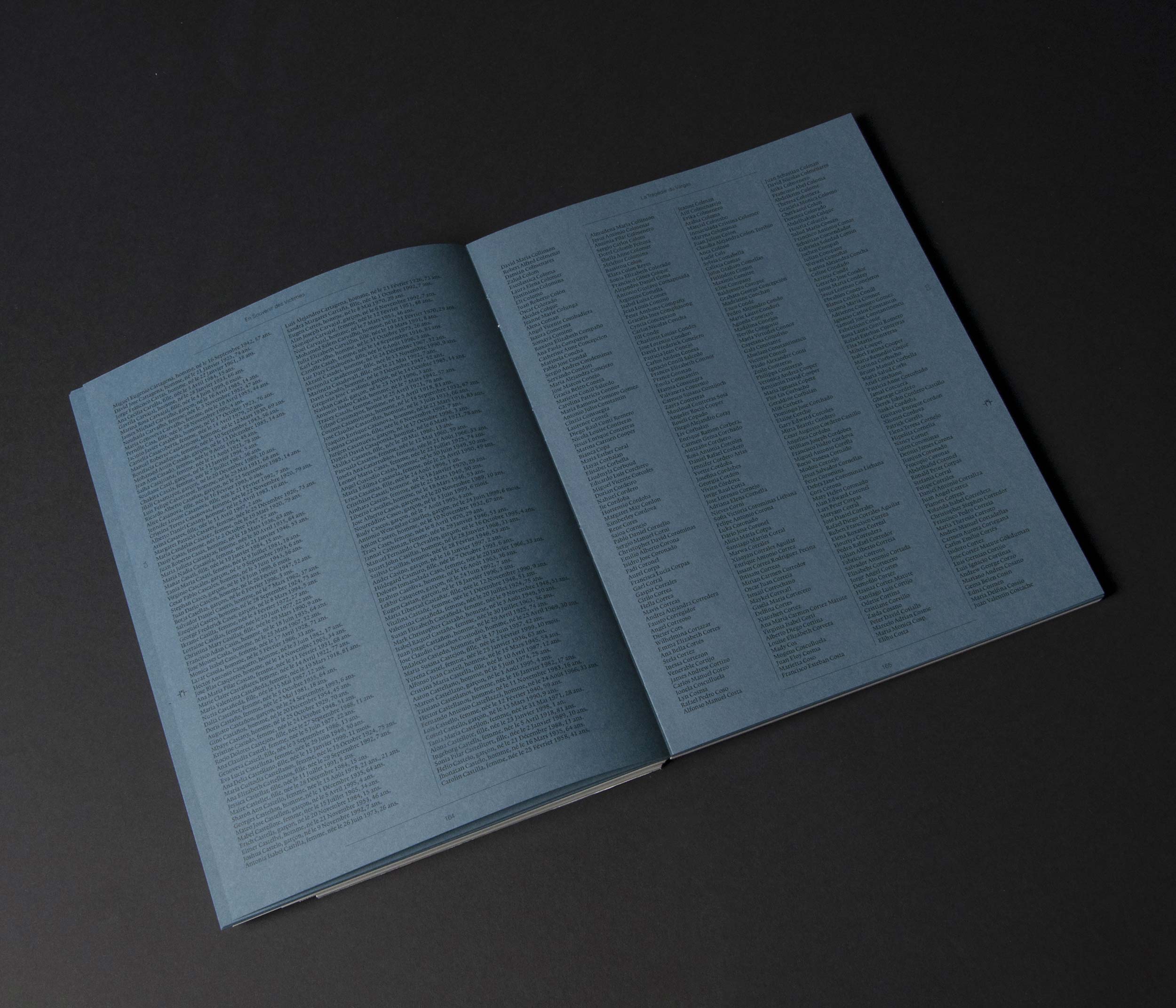
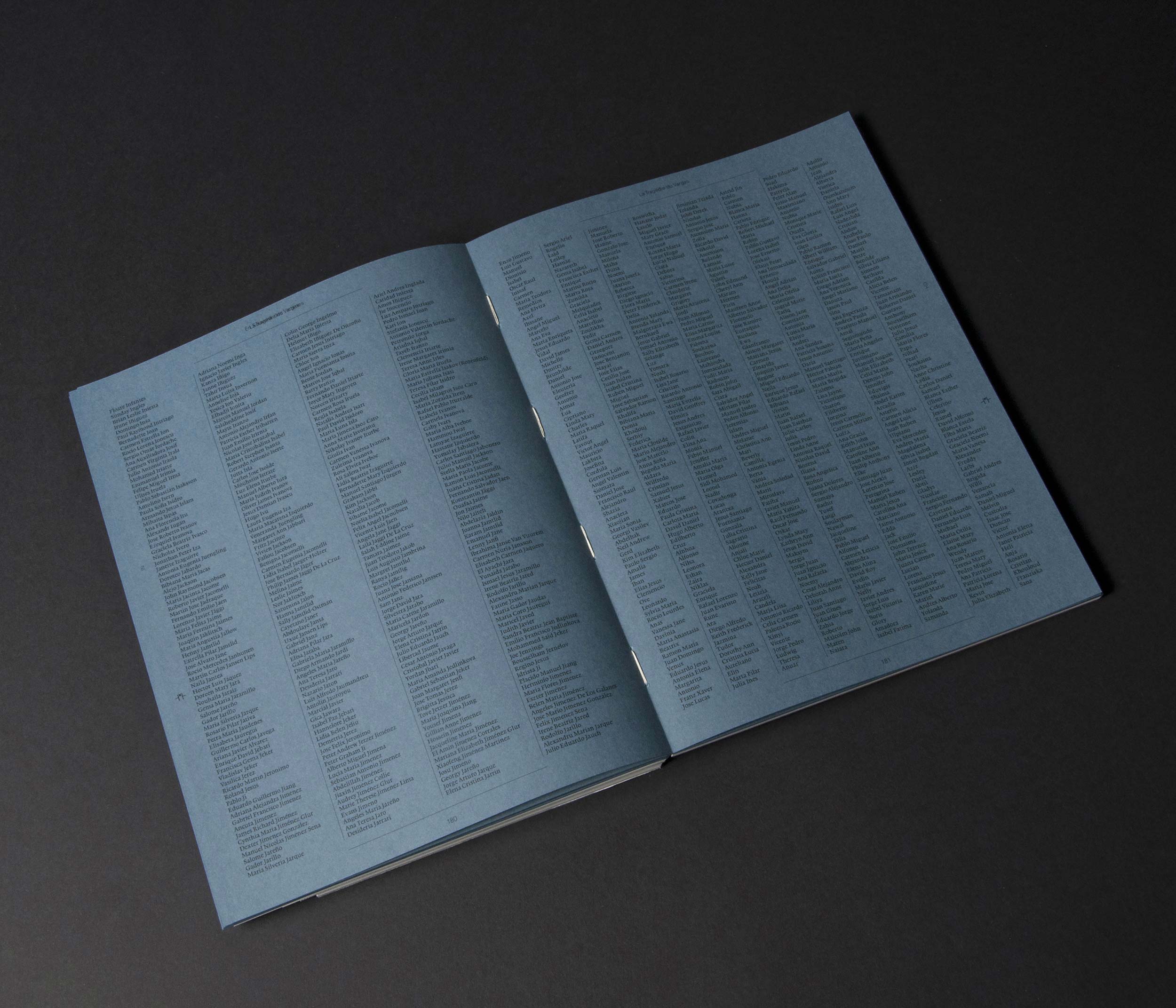

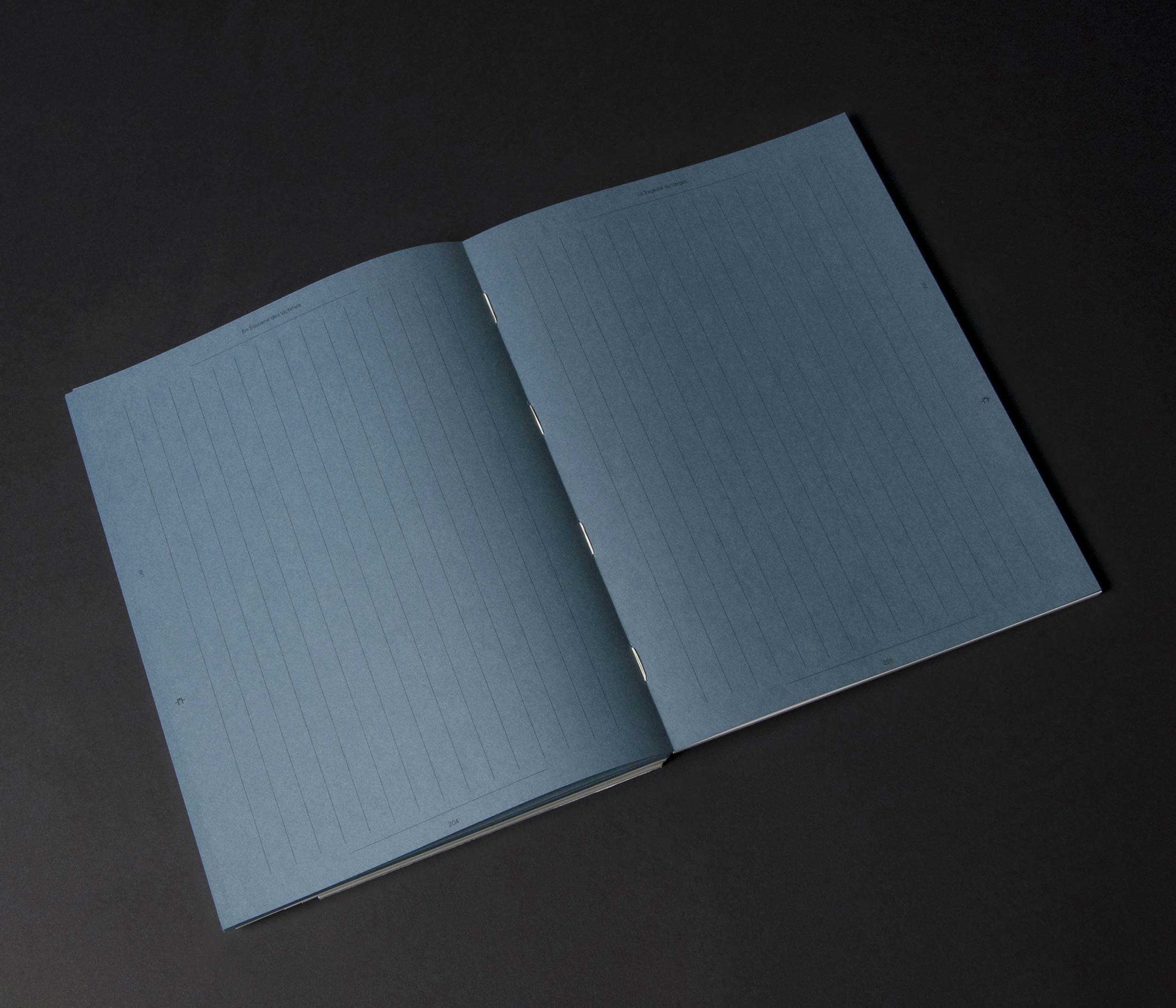
Vargas tells a tragedy initiated by a landslide in 1999 in Venezuela.
The chapters of this book begin by being organised, but then start to subtly disintegrate into chaos. Here, the concept is to induce a more symbolic perception of the information for the reader. The central part follows on colored paper; a register containing the names of the 29,000 victims. The bare binding reveals a color on the spine of the book, which when placed in the collection of major disasters, shows which ones were the most catastrophic. The final part of the book deals with the reconstruction of the country. Data elements are organised hierarchically at first, then replaced according to the rules of the book. The object is made of books of different sizes, as if it itself had been subject to landslides. As for the title, it is mysterious. To dig a little bit deeper, the reader must detach the bottom part of the cover to reveal the official announcement of the disaster.
—
Edition, ECAL 2012:
18 × 24 cm, hardcover, 256 pages.




